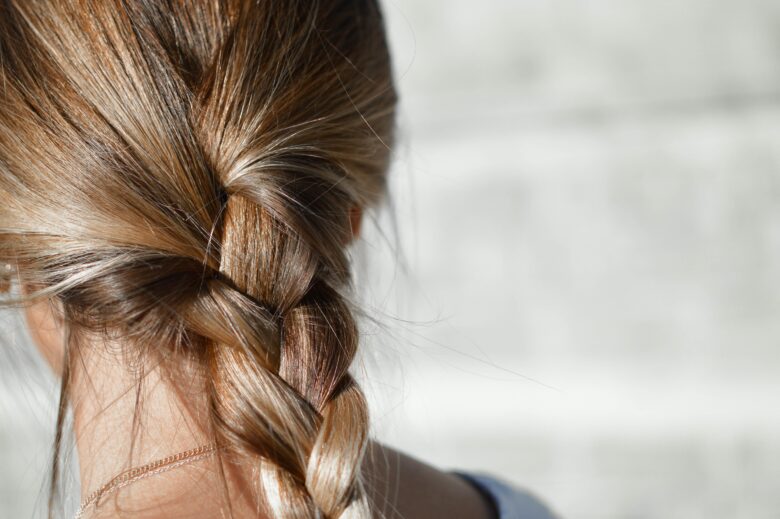Butter for hair? Yes, you can use raw shea butter as a natural conditioner for your tresses. This type of butter refers to the byproduct of shea nuts harvested from a tree in West Africa called Vitellaria Paradoxa. Its production entails a long process of harvesting and washing for oil extraction. Incidentally, the shea or karite tree means tree of life due to its numerous healing properties. Lately, this butter has become widely used in several skincare and hair products across the North American region. Curious about how shea butter is used in hair? These are the following uses for yellow shea butter:
Two Options

Source: unsplash.com
Yellow shea butter refers to the raw variety with a strong odor. It requires filtering to remove impurities. The white version consists of unrefined raw and heavily refined – pure white. The first has a whiter appearance and filtered to eliminate dirt. The second contains moisturizing capabilities without vitamin content. But, according to thebestorganicskincare.com, you can use raw shea butter by itself. Otherwise, add a certain quantity to your conditioner for extra moisture. Likewise, it makes an effective stabilizer for hair creams and shampoos.
5 Smart Ways for Usage
1. Moisturizer
It boasts of healing and emollient (associated with softening) properties die to Vitamins A, E, and essential fatty acids. The latter specifically can help put in moisture to your hair. This can lessen dryness that causes split ends. Likewise, The fatty acids may reduce curling, increase luster, and guard against heat damage. Raw shea butter nourishes your hair and scalp. Thus, women with wavy and rough hair texture can benefit from using it as a sealant to enhance softness and store moisture.
2. Scalp Irritation

Source: pexels.com
The butter’s anti-inflammatory properties can work to reduce soreness and scalp tenderness without blocking the pores. It’s said to be safe for all hair types being a natural product. This has been used for many centuries by Africans to relieve dry and itchy scalp and remove dandruff. It can also provide moisture from hair roots downwards. Nowadays, it benefits relaxed, heat-treated, or colored hair. To use, melt the butter using a double boiler with boiling water. After, let it cool down to a manageable temperature. With your fingertips, smear in small amounts directly on the scalp. Spread over in circular motion. You may add a few drops of tea tree oil for an additional calming sensation.
3. Dandruff Reduction
It also contains a moisture-sealing ability that can remove dandruff from your scalp. Hence, regular use of shea butter protects the hair from pollution and dust.
4. Sealing in Dampness

Source: pexels.com
It seals the hair without leaving it oily. Moreover, this sealing sees to it that your hair stays conditioned during harsh climate conditions. Here’s a reminder. Black hair tends to dry quickly compared to other colors because of its texture. The natural sebum or waxy substance that the scalp secretes finds it harder to slide down the shaft. The coils or bends of black hair produce this effect. Besides, shea butter does not stay on your hair. On the contrary, it sticks into the shaft and strands of your tresses without leaving an uncomfortable, heavy, and greasy feeling. However, it could cover the hair shaft as it protects the hair against excessive heat. To use, melt and mixt with natural oil. Try avocado or grapeseed oils. Use in small amounts before drying with a blower or hair straightener.
5. Hair Growth Promotion
The use of this butter fortifies the hair follicles. This, in turn, prevents too much hair loss and ensures thicker hair. Meanwhile, it provides a shield for your hair against ultraviolet rays. It has a low amount of Sun Protection Factor or SPF that protects the hair from UV rays.
Effects on Hair Texture

Source: unsplash.com
Using oil and butter may cause adverse effects for women with thin hair. Very oily hair goes down to your face, back, and shoulders which can lead to breakouts. Raw shea butter may not be ideal for thin or oily locks since it makes hair dull or greasy. It can be more appropriate for loose hair texture if used in small portions. To apply, heat the shea butter enough to soften your hair. Rub it fully through the scalp and hair. Furthermore, for optimum results, leave it on the hair between 20 and 30 minutes. Finally, rinse and apply shampoo and conditioner as you desire.
Use and Storage
Before using this variety, you should also know the available extracts and how to use them for your hair. First, raw and unprocessed shea butter represents the highest quality. However, the pungent and slightly nutty scent might not be pleasant to some people. Thus, you can tone down this smell by mixing the butter with essential oils.
Store at constant room temperature. It should melt immediately in your hand and be taken in by your skin. Undue exposure to various temperatures can cause a change in texture. Keep the raw shea butter in places not exposed to heat. It could melt and revert to liquid form. In the same way, very low temperature makes the butter stiff and hard to use.
A Final Word

Source: unsplash.com
Going back, this variety of butter which has immense benefits for the skin and hair comes from an African tree. Of course, you can also use it for cooking purposes. It comes in multiple grades with different aromas and appearances. Everyone may not like the whiff and weight of this natural product. It may not even be good for some hair textures. So, better watch out before giving it a try.
Untreated raw shea butter refers to the rawest kind of ingredient. Certainly, you can expect it to be extracted in the most natural method. This butter does not contain any preservatives or toxic chemicals. This information comes from the American Shea Butter Institute, a prominent institution in the country. In the United States, experts have given the commercial variety of shea butter a Grade A – F. This helps classify or categorize the quality according to the density of nutrients and safety for users. For the information of all consumers, Grade A stands as the highest quality.

